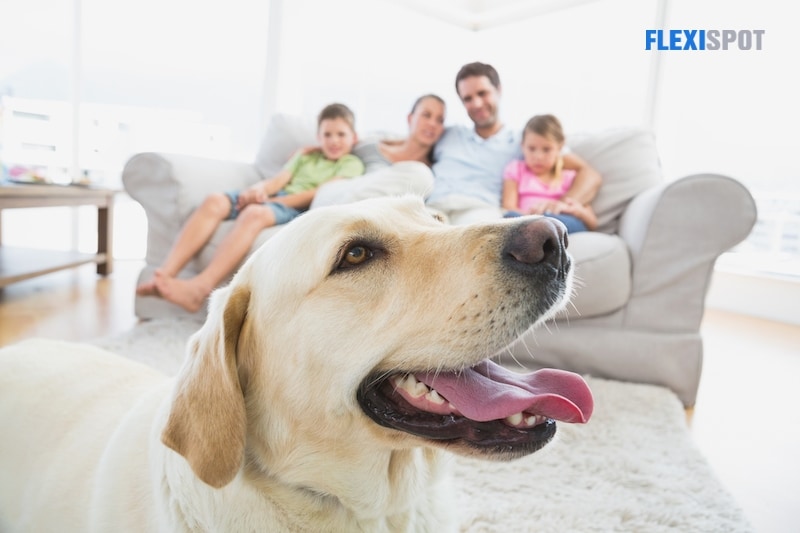After two years of travelling nonstop, here you are at home with no choice but to stay still and lie low. You’ve travelled the world anyway, now it’s time for you to settle down and enjoy life back home. You want to learn how to play an instrument; get your hands dirty in gardening and painting and oh, you could finally bring a dog home.
But easy there, tiger! Owning a dog is not just checking out at the pet store and having a stuffed toy to cuddle when you’re feeling low. Owning a dog requires a lot of commitment and responsibility so you have to do thorough research on what dog will be best suited for you, more than it looks really cute.
Here are eight things you have to look at to help you choose what dog is right for you:
1. Size
For obvious reasons, small-sized dogs take smaller spaces and would be ideal for apartment or condominium dwellers. Taking care of small dogs costs less in terms of food portions and veterinary services. Small dogs, however, can be more aggressive attention-seekers, bark more often, and be the target of bigger dogs.
Big dogs, on the other hand, can be great watchdogs and are good with children. They love outdoor activities and are generally easier to train. You have to be prepared for the more expensive cost of taking care of them as well as their shedding capacity. They also eat much more, of course.
2. Energy Level
Dogs have different energy levels and this must be taken into account alongside your lifestyle and personal energy level. If you work outside on the day and travel often for long periods of time, you must choose a dog with a lower activity level. Dogs who have a high energy level need at least three hours of physical activity and must go out on walks at least once or twice a day. Not doing so may lead to bad temperaments, misbehaviour, and an aloof personality. You may also opt for dogs who are in the medium-energy spectrum. Medium-energy famous breeds include Dashchung, Boston Terrier, and a Cocker Spaniel.
3. Age
Getting a puppy less than six months old will require lots of training and patience. Puppies must learn everything from scratch, whether it be how to potty, when not to bark, what not to bite and so much more. If you’re getting an adult puppy or a senior dog from a shelter, the perks are you’ll have access to the puppy’s history and they are generally more well-behaved. Chances are they won’t bark that much anymore and are used to a sedentary lifestyle given their mature doggy age.
4. Breed
The cuteness of the dog breed is not enough of a reason to gauge what dog you’ll be getting. But knowing the breed helps in familiarizing the future owner with the breed’s history and general behaviour. If you are bent on the breed that you want just because you’ve seen a hundred cute photos of it on Instagram, it pays to do more thorough research to not end up with just a cute dog whose personality your work would not be able to handle.
5. Other Pets at Home
Say it’s your first dog but you already have cats the puppy would be living with. You have to consider the breed’s friendliness towards other animals and vice versa. Some dog breeds that get along well with cats include Golden Retriever, Labrador retriever, beagle, pug, Bichon Frise, and a Basset Hound.
6. Kids at Home
A kid and a dog communicate differently and most often than not, they won’t understand each other. This is why most bites in children are caused by dogs. You have to consider how old the kids are before buying a family dog that would be safe to live with them. Dog breeds who are good with kids include the Golden Retriever, Irish Setter, Poodle, Bull Terrier, and Newfoundland.
7. Budget
Contrary to what first-time dog owners might think, buying a dog is just 1% of the costs you’ll be incurring for the next 12 to 15 years. You must be able to allocate in your budget the food, potty area, grooming, veterinary costs, and insurance of owning a dog. If you can’t cover these just yet, it’s better to forgo buying a dog.

But before bringing a puppy to its forever home, you must prepare your space to be dog-friendly. Not only will it ensure your dog’s happiness, but it will also save you the hassle of cleaning up broken things and replacing bitten furniture. Here are some pointers to transform your space into a friendly nook for dogs:
1. Place fragile things on a height.
2. Get rid of toxic plants. Some indoor plants can be toxic for dogs and children. Aloe vera, daffodils, azaleas, lilies, Japanese yews, and tulips are among the toxic plants to be avoided. The floating shelves may also be filled with potted plants to enliven the space.
3. Cover the couch, pillows, and toys with washable upholstery. It’s easy to take out and replace by changing the covers. You’ll also save your couch from bite marks.
4. Elevate your pet's feeding station. It will help them improve their posture and make feeding time a comfortable experience.
5. Keep electrical cords away. Flexispot has a Cable Management Tray that keeps your workstation clutter-free. It has an open ventilation design that keeps the wire cool and free from dust accumulation. Pets can play safely under your desk without reaching out to electronic wiring placed inside the tray.
